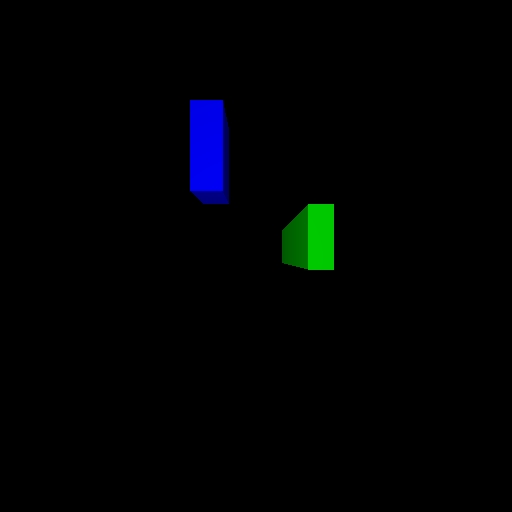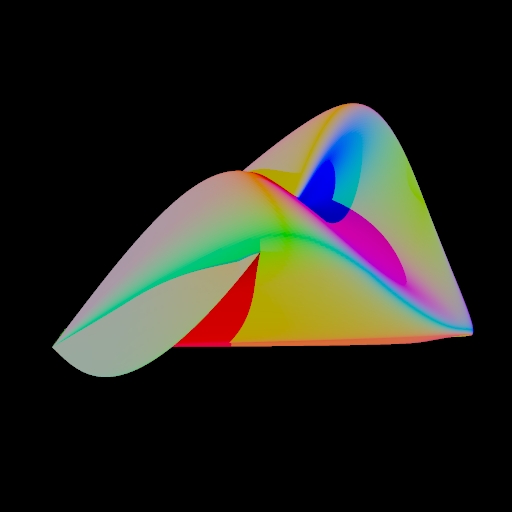 |
The simplest of all the primitives, the plane. Here, we have two parallel planes located above and below
the
camera, with a pointlight located at the camera origin. Download the scene and camera files here SCENE and CAMERA |
 |
Here, three spheres of varying radii are drawn to the screen, with the pointlight located at the origin of
the camera.
Download the scene and camera files here SCENE and CAMERA |
 |
Axis aligned boxes are drawn using 6 planes. In order to get more interesting, rotated boxes an instance
must be
used. Download the scene and camera files here SCENE and CAMERA |
 |
Triangles are obviously essential to any ray tracer. Once triangles are implemented, scenes begin to become
interesting
because models can now be rendered. Download the scene and camera files here SCENE and CAMERA |
 |
Polygons are not necessary for ray tracers, as they can be created with triangles, but less geometry needs
to be
specified when polygons are implemented. Download the scene and camera files here SCENE and CAMERA |
 |
Once you have your plane primitive working, creating a disc primitive is simple. A disc needs a normal,
center
and radius. The intersection is just like that of a plane, with the extra constraint of making sure the point of
intersection
is within the radius of the disc. Discs can be used to close off the openings in cones. Download the scene and camera
files here SCENE and CAMERA |
 |
Cones were the most difficult primitive to get working, but once they are implemented, things like lamp
shades, soda
cans, etc. are simple to model. Download the scene and camera
files here SCENE and CAMERA |
 |
NURBS allow extremely complex geometry without specifying tons of points. This picture only required 15
control points. I broke this NURBS into 180000 triangles and then rendered them in a BVH. This surface is a
simple white lambertian with 6 colored lights spread around the scene. Download the scene and camera files here SCENE and CAMERA |
|







